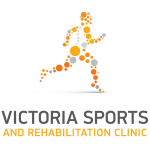This is a really common presentation to clinics everyday. But what is Trochanteric Bursitis? Lets break it down.
The Bursitis Part?
A bursa is a sack full of fluid which sits in different parts of your body. It acts as a cushion between many of the muscles, tendons and joints. Bursitis is the inflammation and swelling of a bursa.
The Trochanteric Part?
Your trochanter, or better known as your greater trochanter is the bony protuberance that you can feel on the side of your hip, it is part of your femur(your upper leg bone). A number of muscles attach into and pass over this spot. Also a number of bursae (plural for bursa) are present here.
So putting it all together, trochanteric bursitis is the inflammation of a bursa or bursae at your greater throchanter.
Who normally presents with it?
Most commonly this occurs in middle aged to elderly women.
What are the symptoms?
- lateral hip pain that is superficial and not in the joint;
- pain down the outside of the leg. Normally no further than the knee;
- it can be painful to lie on;
- sore and tender when you push on it;
- sore after long periods of sitting and walking;
How do you get it?
It is caused when the bursa gets excessively rubbed between the surrounding muscles. This can be caused by:
- Lower limb muscle weaknesses;
- Leg length differences;
- Lower limb biomechanical issues;
- Poor lumbar spine and pelvic mechanics;
- Lumbar spine pathology, i.e. disc degeneration.
How do you treat it?
Your Osteopath will help identify the cause by performing a thorough assessment of the biomechanics of your feet, ankles, knee, hips, pelvis and lower back. This will form the basis of the treatment techniques utilized to reduce your pain and the activities prescribed in your rehabilitation program.
- Rest – depending on the level of inflammation present the type and amount of rest will vary. Normally rest only means avoiding or modifying the activities that aggravate it.
- Manipulation – getting the biomechanics correct in your pelvis and lower back is very important.
- Massage/Trigger Point Therapy – useful in reducing muscle tightness and tenderness. This will reduce friction between the bursa and the surrounding muscles and help to improve local blood flow.
- Strength Exercises – It is important to strengthen around the area to help provide the correct mechanics and therefore pain free function.
- Stretching – this will further help lengthen surrounding muscles that may be overloading the bursa.
- Cortisone Injection – if other treatment has failed then your Osteopath can refer you directly to your GP or Sports Physician for a cortisone injection into the bursa.
Victoria Sports & Rehabilitation Clinic is located on the Mornington Peninsula, 1287 Nepean Hwy, Mt Eliza. You can make an appointment online at www.vsrc.com.au or phone the clinic on (03) 9787 7702.
